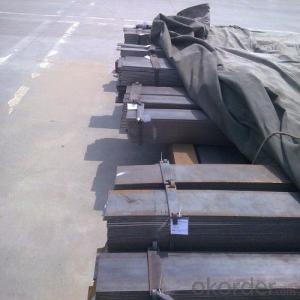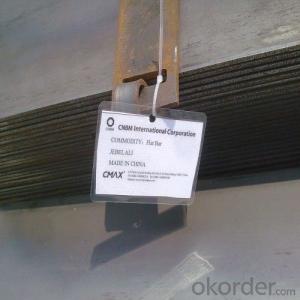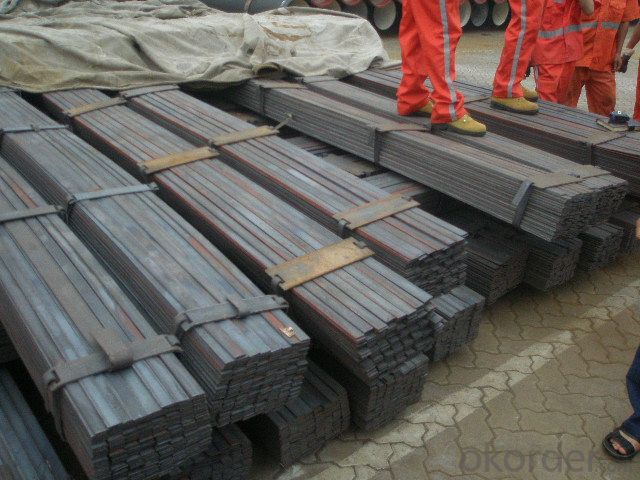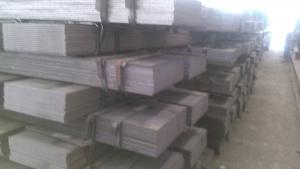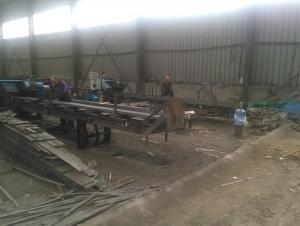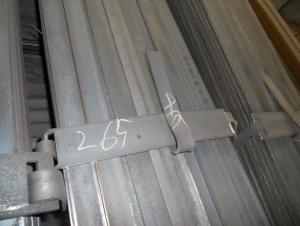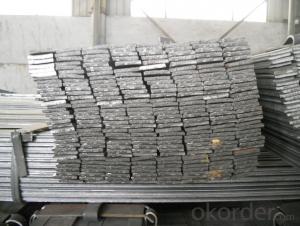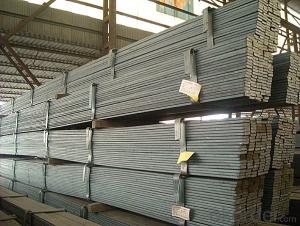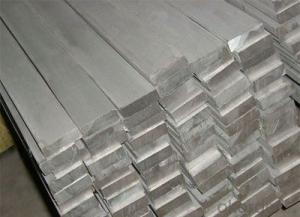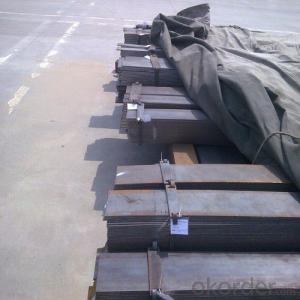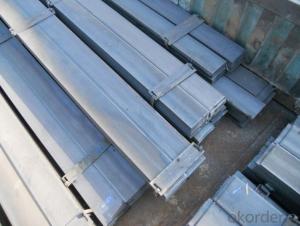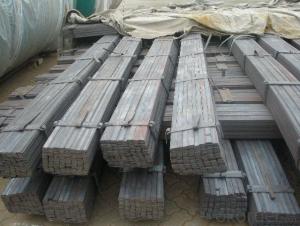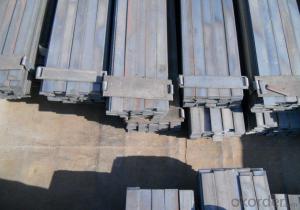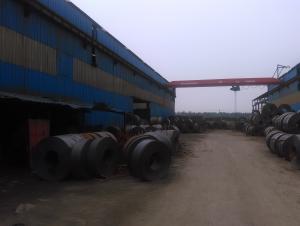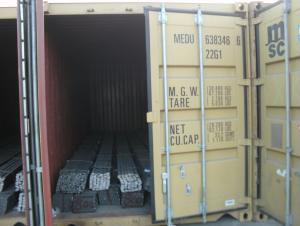Hot Rolled Flat Bar with Material Grade Q235
- Loading Port:
- Tianjin
- Payment Terms:
- TT OR LC
- Min Order Qty:
- 25 m.t.
- Supply Capability:
- 10000 m.t./month
OKorder Service Pledge
OKorder Financial Service
You Might Also Like
OKorder is offering high quality Flat Bar at great prices with worldwide shipping. Our supplier is a world-class manufacturer of steel, with our products utilized the world over. OKorder annually supplies products to European, North American and Asian markets. We provide quotations within 24 hours of receiving an inquiry and guarantee competitive prices.
Product Applications:
Slit Cutting Flat Bars are ideal for structural applications and are widely used in the construction of buildings and bridges, and the manufacturing, petrochemical, and transportation industries.
Product Advantages:
OKorder's Flats Bars are durable, strong, and resist corrosion.
Main Product Features:
· Premium quality
· Prompt delivery & seaworthy packing (30 days after receiving deposit)
· Corrosion resistance
· Can be recycled and reused
· Mill test certification
· Professional Service
· Competitive pricing
Product Specifications:
Manufacture: Hot Rolled
Grade: Q195 – 235
Certificates: ISO, SGS, BV, CIQ
Length: 6m – 12m, as per customer request
Packaging: Export packing, nude packing, bundled
Chemical composition of Q235
Alloy No | Grade | Element(%) | ||||
C
| Mn
| S
| P
| Si
| ||
Q235
|
B
|
0.12—0.20 |
0.3—0.7 |
≤0.045 |
≤0.045
|
≤0.3
|
Physical properties of Q235
Alloy No | Grade | Yielding strength point(Mpa) | Tensile strength (Mpa) | Elongation after fracture(%) | ||||||
Thickness (mm) | Thickness (mm) | |||||||||
≤16 | >16--40 | >40--60 | >60--100 | ≤16 | >16--40 | >40--60 | >60--100 | |||
≥ | ≥ | |||||||||
Q235 |
B |
235 |
225 |
215 |
205 |
375--500 |
26 |
25 |
24 |
23 |
FAQ:
Q1: How soon can we receive the product after purchase?
A1: Within three days of placing an order, we will begin production. The specific shipping date is dependent upon international and government factors, but is typically 7 to 10 workdays.
Q2: How do we guarantee the quality of our products?
A2: We have established an advanced quality management system which conducts strict quality tests at every step, from raw materials to the final product. At the same time, we provide extensive follow-up service assurances as required.
Q3: The products are invoicing on theoritical weight or on actual weight?
A3: We can do it in both manners, according to the customers' request.
Images:
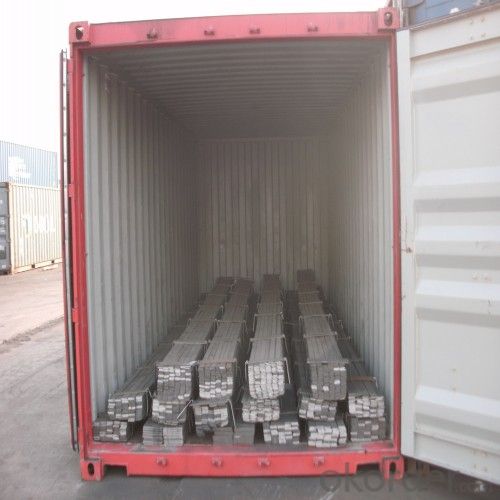
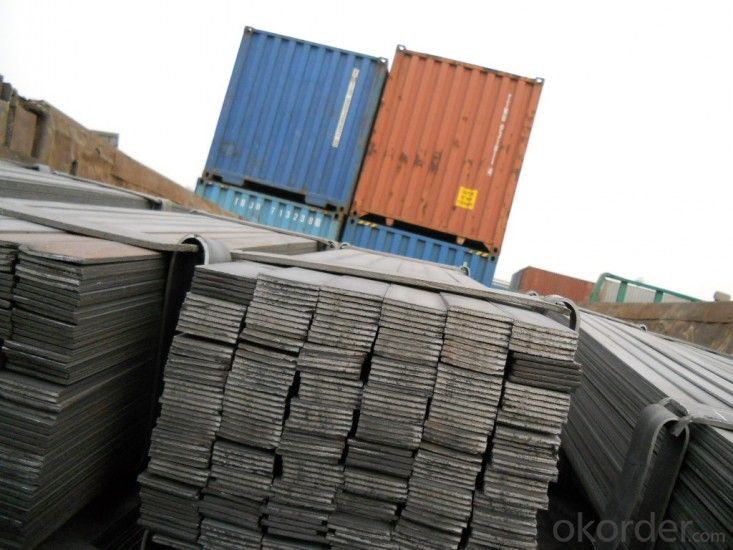
- Q: What are the different tolerance levels for steel flat bars?
- The tolerance levels for steel flat bars can vary depending on the specific requirements and standards set by the industry. Generally, the tolerance levels for steel flat bars can range from tight tolerances, where the dimensions must be extremely precise, to standard tolerances, where a small degree of variation is acceptable. It is important to consult the relevant standards or specifications to determine the exact tolerance levels for a particular application.
- Q: Are steel flat bars suitable for load-bearing structures in bridges?
- Yes, steel flat bars are suitable for load-bearing structures in bridges. Steel flat bars are known for their high strength-to-weight ratio, making them ideal for distributing heavy loads and providing structural support in bridge construction. Additionally, their versatility allows for various applications, such as beams, braces, and supports, making them a reliable choice for load-bearing structures in bridges.
- Q: What are the different standards for steel flat bars?
- There are several different standards for steel flat bars, which vary depending on the country and industry. Some commonly used standards include ASTM A36, ASTM A572, DIN 17100, EN 10025-2, and JIS G3101. These standards specify the chemical composition, mechanical properties, dimensions, and tolerances for steel flat bars, ensuring consistency and quality in their production and use.
- Q: Can steel flat bars be used for making fencing?
- Yes, steel flat bars can be used for making fencing. They are commonly used in fencing projects due to their durability, strength, and resistance to wear and tear. Steel flat bars provide a sturdy framework for fences and can be easily welded or bolted together to create a secure barrier.
- Q: Can steel flat bars be used for manufacturing automotive parts or components?
- Indeed, automotive parts or components can be manufactured using steel flat bars. In the automotive industry, steel flat bars find widespread use in diverse applications like brackets, supports, frames, and reinforcements. Due to steel's exceptional strength and durability, it stands as an ideal material for automotive manufacturing, capable of enduring the demanding loads and requirements of vehicles. Furthermore, steel flat bars offer ease of machining, welding, and shaping into various dimensions, providing flexibility and adaptability for the production of automotive components.
- Q: What is the surface area of flat steel 100*3 meters per metre?
- 2X (0.1x1+0.003x1+0.1x0.003) =0.2066 with a surface area of 0.2066 square meters.Flat, refers to the width 12-300mm, thickness 4-60mm, cross section is rectangular in shape and with a blunt edge of steel.
- Q: Can steel flat bars be used for making hinges or brackets?
- Yes, steel flat bars can be used for making hinges or brackets. Steel is a strong and durable material that can withstand heavy loads and provide stability. The flat shape of the bar allows for easy fabrication and shaping into desired forms for hinges or brackets. Steel's versatility also allows for different finishes, such as galvanized or powder-coated, which can enhance its corrosion resistance and aesthetic appeal. It is important to consider the specific requirements and weight-bearing capacity needed for the hinges or brackets, as well as any necessary reinforcement or additional components that may be required for specific applications.
- Q: What are the different surface treatments available for steel flat bars?
- Steel flat bars offer a range of surface treatments, each with its own advantages and characteristics. Consider the following options: 1. Opt for hot-dip galvanizing, where the steel flat bar is immersed in molten zinc, forming a protective coating. This treatment excels at preventing corrosion, making it ideal for outdoor applications exposed to moisture and harsh conditions. 2. Consider electroplating, a process where a thin layer of metal is deposited onto the steel flat bar electrochemically. This treatment can enhance appearance, improve corrosion resistance, or provide other desired properties, depending on the chosen metal for plating. 3. Explore powder coating, a dry finishing process where a fine powder adheres to the steel flat bar electrostatically and is then heat-cured. This treatment yields an attractive and durable surface that resists chipping, scratching, and fading. With a wide range of colors and textures available, powder coating allows for customization and versatility. 4. Explore paint coatings, where steel flat bars can be coated with various types of paints to enhance aesthetics, provide corrosion protection, or improve other properties. Depending on specific requirements and desired appearance, different paint coatings like epoxy, enamel, or polyurethane can be utilized. 5. Consider shot blasting, which involves propelling abrasive particles at high speed onto the steel flat bar's surface to eliminate rust, scale, and other impurities. This treatment enhances the adhesion of subsequent coatings, such as paints or galvanizing, while providing a clean and smooth surface. 6. Look into passivation, a chemical treatment that removes surface contaminants and forms a protective oxide layer on stainless steel flat bars. This treatment enhances corrosion resistance, making it suitable for applications exposed to corrosive environments. 7. Explore acid etching, a process where the surface of the steel flat bar is treated with an acidic solution to create a textured or patterned finish. This treatment can serve decorative purposes or improve the grip of the steel in specific applications. When selecting the most appropriate surface treatment for steel flat bars, consider the specific requirements of your application, such as corrosion resistance, appearance, durability, and cost.
- Q: What is the difference between carbon steel and tool steel flat bars?
- Carbon steel and tool steel flat bars are commonly utilized in a range of industries but have distinct differences. The composition and intended use are the primary factors setting carbon steel apart from tool steel. Carbon steel consists mainly of iron and carbon with small amounts of other elements. It is a versatile and cost-effective material suitable for construction, automotive, and general fabrication purposes. Carbon steel flat bars are known for their durability and strength, making them ideal for structural applications. Conversely, tool steel is a specialized steel type specifically created for crafting tools and dies. It contains additional alloying elements like chromium, vanadium, tungsten, or molybdenum, which enhance hardness, wear resistance, and toughness. Tool steel flat bars maintain their shape and cutting edge even under high temperatures and intensive use. They are commonly employed in the manufacturing of precision components, tools, dies, and molds. Another contrast between carbon steel and tool steel flat bars lies in their hardness. Tool steel flat bars are generally much harder than carbon steel flat bars due to their higher alloy content. This increased hardness enables tool steel to endure the repetitive stress and impact often encountered during tooling operations. In terms of cost, carbon steel flat bars are generally more affordable than tool steel flat bars. This is because tool steel necessitates additional alloying elements to attain the desired properties, which raises production costs. In conclusion, although carbon steel and tool steel flat bars share the commonality of being types of steel, they serve different purposes. Carbon steel is a versatile and economical material used in various applications, while tool steel is a specialized steel designed for tool and die production. Tool steel flat bars are harder and more expensive due to their alloy content, while carbon steel flat bars are renowned for their strength and affordability.
- Q: What are the different types of steel finishes available for flat bars?
- There are several types of steel finishes available for flat bars, including hot rolled, cold rolled, galvanized, and stainless steel.
Send your message to us
Hot Rolled Flat Bar with Material Grade Q235
- Loading Port:
- Tianjin
- Payment Terms:
- TT OR LC
- Min Order Qty:
- 25 m.t.
- Supply Capability:
- 10000 m.t./month
OKorder Service Pledge
OKorder Financial Service
Similar products
Hot products
Hot Searches
Related keywords
